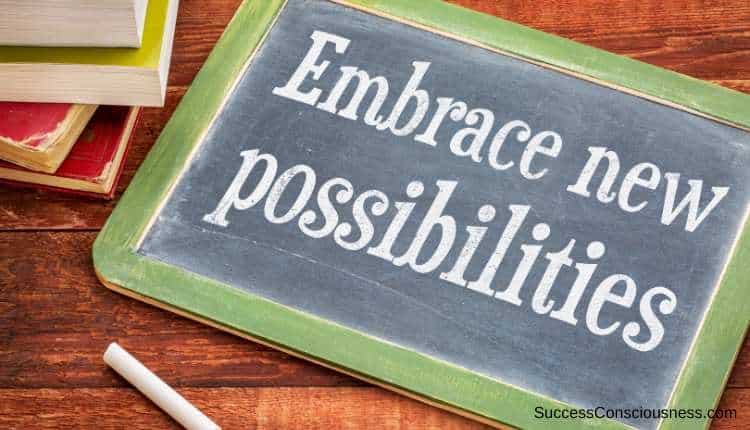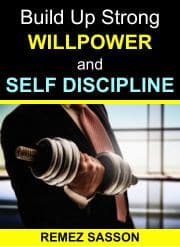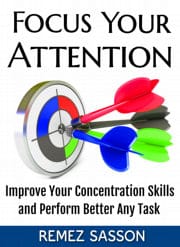
Mental flexibility is the skill that allows us to adapt to new challenges, shift our perspectives, and think creatively in problem-solving situations. It’s the foundation for opening ourselves up to fresh ideas, opportunities, and experiences that we may not have considered otherwise.
Developing this flexibility enables us to approach life with an open mind, inviting growth and resilience into our lives.
Here’s a closer look at what mental flexibility means, why it matters, and how you can begin cultivating it in practical ways.
Understanding Mental Flexibility
Browse our online courses on meditation, positive thinking, overcoming procrastination, and freedom from distractions.
Mental flexibility is a skill that enables you to adapt your thinking when faced with new information, perspectives, or challenges. Unlike rigid thinking, which clings to the familiar, mentally flexible thinking is expansive and adaptable.
When you are mentally flexible, you are more inclined to question assumptions, think critically, and welcome alternative solutions rather than defaulting to established routines or beliefs.
For many, mental rigidity comes from the subconscious need for security and predictability. We are drawn to the safety of well-trodden paths and familiar routines. While stability can bring comfort, too much rigidity can limit our ability to think creatively, innovate, and embrace growth.
Learning how to remain adaptable is about cultivating a balance between seeking stability and remaining open to the unknown.
The Importance of Mental Flexibility
1. Adaptability in a Changing World: Life rarely moves according to plan. Mental flexibility helps us deal with the unexpected by allowing us to adjust our perspectives and explore alternatives. This adaptability is essential for personal growth, as it equips us to handle challenges without getting stuck in unhelpful mindsets.
2. Increased Creativity and Innovation: Mentally flexible people are more likely to find novel solutions to problems because they approach situations with a broader perspective. This creativity opens doors to new possibilities in every area of life, from work to personal relationships.
3. Emotional Resilience: When we are mentally flexible, we can process difficult emotions and situations more effectively, which helps us avoid getting caught in cycles of rumination. Mental flexibility encourages us to learn from experiences rather than feeling trapped by them.
4. Enhanced Interpersonal Relationships: Being open to different perspectives makes it easier to understand others’ viewpoints and build empathy. This ability is invaluable in creating stronger, more harmonious connections with others.
Steps to Cultivating Mental Flexibility
Becoming more mentally flexible is a gradual process that involves rethinking certain habits and attitudes. Here are key strategies to get started:
1. Challenge Your Assumptions
A significant part of mental rigidity stems from deeply held assumptions about how things “should” be. These assumptions are often unconscious but can limit your ability to see alternative paths.
Start questioning these by identifying beliefs or opinions you take for granted and asking yourself if they are valid or based on habitual thinking.
Practical Exercise: Try to list a few personal beliefs and ask, “What if the opposite were true?” or “How would someone with a different background view this?”
2. Observing Your Thoughts
Endeavor to observe your thoughts and emotions without judgment. By observing how certain thoughts make you feel, you become aware of your mental patterns and can choose to respond rather than react.
This is key to cultivating flexibility, as it creates space between your thoughts and actions, allowing for more thoughtful choices.
3. Seek Out New Experiences
One of the best ways to develop mental flexibility is by exposing yourself to unfamiliar environments or activities. New experiences force you to break out of your usual routines, challenging your brain to create new neural pathways. Over time, this makes it easier to adopt fresh perspectives and explore alternative solutions.
Practical Exercise: Commit to trying one new thing every week. It could be a new food, visiting a new place, or engaging in a new activity. Notice any resistance that comes up and remind yourself that discomfort is often a sign of growth.
4. Cultivate Curiosity
Curiosity is a mindset that drives us to explore and ask questions. It allows us to engage with the world in an open-ended way, making us more receptive to new information. By staying curious, you invite different perspectives and ideas into your life.
Practical Exercise: Practice “beginner’s mind,” which means trying to see things as if for the first time. The next time you encounter something familiar, ask questions about it or approach it from a fresh angle. This can help you recognize that there’s always more to learn.
5. Practice “What If” Thinking
When we are stuck in rigid thinking, we tend to see situations as black or white. To cultivate flexibility, practice “What if?” thinking. This technique encourages creative problem-solving and helps you consider multiple perspectives or outcomes, expanding your mental horizons.
Practical Exercise: When faced with a challenge, ask yourself, “What if there’s another way?” or “What if I could approach this differently?” Play out the different scenarios and see how this mindset shift can open up new options.
6. Learn to Detach from Outcomes
One source of mental rigidity is our attachment to specific outcomes. This attachment often creates anxiety, making us feel as though things must turn out a certain way. By letting go of rigid expectations, you create space for possibilities you may not have anticipated.
Practical Exercise: Reflect on a goal you have and ask yourself, “What would happen if things turned out differently?” Instead of fixating on a single result, try focusing on the qualities you’d like to develop or the journey itself. This shift can help you remain adaptable and open to different outcomes.
7. Surround Yourself with Diverse Perspectives
Spending time with people from different backgrounds and viewpoints can challenge your beliefs and expand your understanding. Diversity in thought stimulates mental flexibility by exposing you to ways of thinking that you may not have encountered otherwise.
Practical Exercise: Seek out conversations with people who have different perspectives from your own. It might be joining a new social group or engaging in discussions that challenge your usual way of thinking. Aim to listen more than you speak and be genuinely curious about others’ viewpoints.
Building Mental Flexibility as a Lifelong Skill
You don’t achieve mental flexibility overnight; it’s a lifelong skill that needs regular practice and nurturing. Like any form of growth, it requires patience, openness, and a willingness to let go of certainty.
Adopting this mindset empowers you to respond thoughtfully to life’s changes, viewing challenges as opportunities to grow rather than obstacles to avoid.
Final Thoughts
Mental flexibility is about learning to hold your beliefs and plans lightly while staying curious and open to alternative paths.
By cultivating this flexibility, you can increase your adaptability, creativity, and resilience, which will serve you well in every aspect of your life.
Life is a constantly evolving journey, and by keeping your mind open, you can move forward with confidence and grace, ready to face the unknown with a spirit of curiosity and adventure.
Ultimately, developing mental flexibility is an invitation to step out of your comfort zone, break down the walls of rigid thinking, and explore life’s endless possibilities. As you begin to practice these techniques, you’ll find that the world around you becomes richer, more vibrant, and full of new potential waiting to be explored.
Browse our online courses on meditation, positive thinking, overcoming procrastination, motivation, and freedom from distractions.




